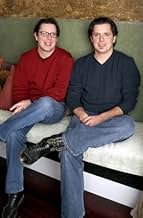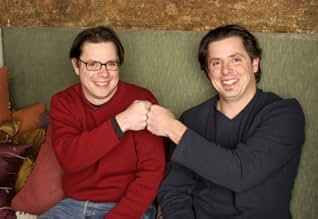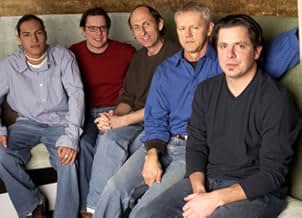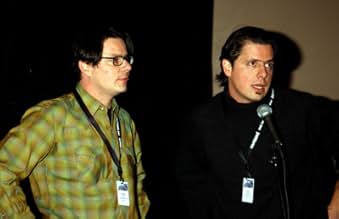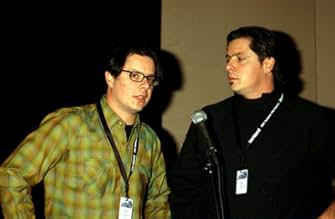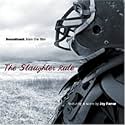IMDb RATING
5.8/10
2.8K
YOUR RATING
A young man finds solace with a young woman, his mother, and a high-school football coach who recruits him to quarterback a six-man team.A young man finds solace with a young woman, his mother, and a high-school football coach who recruits him to quarterback a six-man team.A young man finds solace with a young woman, his mother, and a high-school football coach who recruits him to quarterback a six-man team.
- Directors
- Writers
- Stars
- Awards
- 2 wins & 2 nominations total
John Henry Marshall
- Matt Kibbs
- (as John Henry Marshall III)
- Directors
- Writers
- All cast & crew
- Production, box office & more at IMDbPro
Featured reviews
I don't usually find movies first by their soundtrack, but I first heard of "The Slaughter Rule" because Jay Farrar, of the late Uncle Tupelo, did the score and song selections, including by Vic Chestnutt, the Flatlanders, and the Pernice Brothers. So I was intrigued when I saw it was on Sundance Channel as it hadn't appeared on screens in New York.
The debut jointly written/directed feature of twin brothers Andrew and Alex Smith, the film has a lot of similarity to Tom Cruise's early "All the Right Moves," even down to charismatic young star Ryan Gosling clearly being a movie star hunk of the future.
Set in the brothers' home area of rugged (and very desolate) Montana in the fall, this film takes its working class football frame of athlete seeking father figure and coach conflict much further in examining maleness and the implications of the homo-eroticism of such sports much further.
It bravely (particularly by David Morse in a touchingly agonized performance) goes into the breach of what much discussion of current scandals has avoided, at the confused nexus of pedophilia and sexual identity, particularly for teen-age boys.
There's also a dollop of racial issues via the very realistically portrayed poverty of the Native Americans.
The women are mostly helpless within this overwhelmingly male environment, and their best choice for survival is just to leave, as unromantically satisfying as that is.
This ranks in the gritty tradition of sports movies as a setting to demonstrate social tensions like "Loneliness of the Long Distance Runner" than more popular fare.
The debut jointly written/directed feature of twin brothers Andrew and Alex Smith, the film has a lot of similarity to Tom Cruise's early "All the Right Moves," even down to charismatic young star Ryan Gosling clearly being a movie star hunk of the future.
Set in the brothers' home area of rugged (and very desolate) Montana in the fall, this film takes its working class football frame of athlete seeking father figure and coach conflict much further in examining maleness and the implications of the homo-eroticism of such sports much further.
It bravely (particularly by David Morse in a touchingly agonized performance) goes into the breach of what much discussion of current scandals has avoided, at the confused nexus of pedophilia and sexual identity, particularly for teen-age boys.
There's also a dollop of racial issues via the very realistically portrayed poverty of the Native Americans.
The women are mostly helpless within this overwhelmingly male environment, and their best choice for survival is just to leave, as unromantically satisfying as that is.
This ranks in the gritty tradition of sports movies as a setting to demonstrate social tensions like "Loneliness of the Long Distance Runner" than more popular fare.
Having this movie shot in my hometown (Great Falls, Montana), I answered a local casting call for extras. Blink and you'll miss me in the bonfire/party scene. My high school (Great Falls High) was the school used in the beginning of the film, and the locker room the team is in happens to be the girl's locker room. David Morse's character lives above a vacuum place downtown. The hospital in the movie used to actually be the old Colombus hospital, but is now a office building.
The twins in the movie (Matt and Paul Pippinich), I went to school with for 7 years, and that old orange truck is theirs. Matt played clarinet in a dixieland jazz band.
When I saw this movie at the Wilma theater in Missoula, MT, one of the directors was there to answer questions. He said that they chose Great Falls (pop. approx. 60,000) for shooting "because it was sort of the town that time forgot." In some ways, this is true, but the city is not as run down and rural as it appears in the movie.
Overall, I found myself enjoying this movie more for the "hey, I know him!" or "I lived 2 miles from there" situations. While this wasn't a movie that I would want to watch repeatedly, I still highly suggest it for rental. It's more than just a "sports" movie.
Also, a stellar soundtrack that makes the movie that much better.
The twins in the movie (Matt and Paul Pippinich), I went to school with for 7 years, and that old orange truck is theirs. Matt played clarinet in a dixieland jazz band.
When I saw this movie at the Wilma theater in Missoula, MT, one of the directors was there to answer questions. He said that they chose Great Falls (pop. approx. 60,000) for shooting "because it was sort of the town that time forgot." In some ways, this is true, but the city is not as run down and rural as it appears in the movie.
Overall, I found myself enjoying this movie more for the "hey, I know him!" or "I lived 2 miles from there" situations. While this wasn't a movie that I would want to watch repeatedly, I still highly suggest it for rental. It's more than just a "sports" movie.
Also, a stellar soundtrack that makes the movie that much better.
I must have been standing next the to the last reviewer in the hallway (at the Park City Library) at Sundance. Morse walked by along with the directors. I managed to corral Andrew Smith and ask him about the movie. (These directors LOVE to talk about their work.)
First of all, this is not a great movie, and may never be fit for the mass market. But it is, I think, a good movie and a very powerful and thought-provoking one. My initial reaction, which I passed onto Smith, was that I was moved by the internal conflict in this unusual coming-of-age story. What kind of man is Gosling going to become? How will he deal not just with the peer pressures and love interests, but with societal prejudices and the essence of humanity, compassion and kindness. Interestingly, I learned that an early tagline considered for the film was something like "What makes a man?"
David Morse's performance is absolutely incredible in this movie. I spoke to a film critic about it and he said he thought Morse was the best American actor that no one has heard of. It is an extremely challenging and enigmatic role that he plays with a poignant, compelling and believable complexity. I was at the same time deeply moved, repulsed, angered and sympathetic. I was reminded that there is good and bad in all of us, and that the demons within are part of the essence of humanity.
Maybe too deep and philosophical for a movie about 8-man football. And that's just it--it's a situational contrast that's unexpected and jarring. If you ever get a chance to see this film, grab it.
First of all, this is not a great movie, and may never be fit for the mass market. But it is, I think, a good movie and a very powerful and thought-provoking one. My initial reaction, which I passed onto Smith, was that I was moved by the internal conflict in this unusual coming-of-age story. What kind of man is Gosling going to become? How will he deal not just with the peer pressures and love interests, but with societal prejudices and the essence of humanity, compassion and kindness. Interestingly, I learned that an early tagline considered for the film was something like "What makes a man?"
David Morse's performance is absolutely incredible in this movie. I spoke to a film critic about it and he said he thought Morse was the best American actor that no one has heard of. It is an extremely challenging and enigmatic role that he plays with a poignant, compelling and believable complexity. I was at the same time deeply moved, repulsed, angered and sympathetic. I was reminded that there is good and bad in all of us, and that the demons within are part of the essence of humanity.
Maybe too deep and philosophical for a movie about 8-man football. And that's just it--it's a situational contrast that's unexpected and jarring. If you ever get a chance to see this film, grab it.
Sometimes technical flaws can get in the way of what otherwise could have been a good story. These movie's flaws prevented me from enjoying it much.
First, two key deleted scenes from the start of the film leave the entire premise feeling hollow. The scenes are offered as a special feature on the DVD. If I were to watch this movie again, I'd play these two deleted scenes where they should have been. First, the scene deleted after the conversation about the teen's father that opens the movie. Second, just minutes later the continuation of a scene talking with the coach in his office.
This has been a growing trend, for directors to cut key scenes that explain things at the start of the movie. In at least commentary tracks directors have said they 'just wanted to get on with the movie'. Well of course they might, since they know the story intimately. The viewer won't, and could use the background to make an emotional connection to the movie. Unless the movie is past the two hour mark, why consider cutting valuable scenes?
Gosling and some of the other performances were great. Of course Gosling does great even in rotten movies like Murder By Numbers.
The wide screen was an overly wide aspect, I guess meant to highlight those beautiful outdoor scenes over the actors. It leaves barely enough room for actors' heads in places, and it made the brief shower scene no fun at all. To echo another comment, the sound was very poor in places. More than accents, it was bad mixing where sound jumped from soft whisphers to loud music then back. My finger ended up fiddling with the volume throughout.
In hindsight, I might watch The Slaughter Rule once, but it won't be worth watching even a second time.
First, two key deleted scenes from the start of the film leave the entire premise feeling hollow. The scenes are offered as a special feature on the DVD. If I were to watch this movie again, I'd play these two deleted scenes where they should have been. First, the scene deleted after the conversation about the teen's father that opens the movie. Second, just minutes later the continuation of a scene talking with the coach in his office.
This has been a growing trend, for directors to cut key scenes that explain things at the start of the movie. In at least commentary tracks directors have said they 'just wanted to get on with the movie'. Well of course they might, since they know the story intimately. The viewer won't, and could use the background to make an emotional connection to the movie. Unless the movie is past the two hour mark, why consider cutting valuable scenes?
Gosling and some of the other performances were great. Of course Gosling does great even in rotten movies like Murder By Numbers.
The wide screen was an overly wide aspect, I guess meant to highlight those beautiful outdoor scenes over the actors. It leaves barely enough room for actors' heads in places, and it made the brief shower scene no fun at all. To echo another comment, the sound was very poor in places. More than accents, it was bad mixing where sound jumped from soft whisphers to loud music then back. My finger ended up fiddling with the volume throughout.
In hindsight, I might watch The Slaughter Rule once, but it won't be worth watching even a second time.
Despite the novelty of its setting, 'The Slaughter Rule' is a fairly conventional coming-of-age tale about a boy who grows into manhood by becoming a member of a ragtag six-man football team. Roy is a teenager trapped in a small Montana town whose life has not been going any too well of late. His father, with whom he had only the most casual of relationships, has been discovered dead on a railroad track, a possible suicide victim. His mother, embittered by their divorce, sleeps around with countless men and has no real inclination to provide her son with any but the most cursory form of maternal affection. On top of all this, Roy has just been rejected for the school's varsity football team because the coach finds him lacking in the kind of 'anger' he feels a player needs to be a success on the gridiron. When Roy is asked by Gid, a somewhat eccentric older man in the town, to come join his six-man football team, the youth only reluctantly acquiesces (six-man football is a near rule-less poor relation to the real game, one ostensibly only played by farm boys). It is at this point that Roy's growth into manhood begins, since it turns out that the enigmatic Gid, who one assumes will be merely a father figure for the affection-starved youth, may be seeking more than just a father/son, athlete/coach relationship with the boy.
This latent-homosexual subtext, in fact, is just about the only element that separates 'The Slaughter Rule' from countless other films in this genre. Most everything else about the film feels derivative and stale: the emotionally distant parents, the promiscuous, psychologically detached mother, the abusive stepdad, the sweet girl who wants to flee this hicksville town as fast and as far as a bus ticket can take her. Towards the end, especially, the filmmakers start to pile up the heartbreaks and tragedies, one on top of the other, almost to epic proportions. One wonders how so much can happen in so short a time to so small a group of people. In the almost two hour running time of the film, only the ambiguity of the Roy/Gid relationship arouses any real interest in the viewer.
Ryan Gosling is tremendously appealing as the troubled Roy, and David Morse (the father in 'Contact') turns Gid into a nicely sympathetic figure. The starkness of the Montana landscape also provides an appropriate backdrop for the bleak melodrama that is playing itself out in the foreground. Apart from these few quality elements, however, there isn't a whole lot else to commend in 'The Slaughter Rule.'
This latent-homosexual subtext, in fact, is just about the only element that separates 'The Slaughter Rule' from countless other films in this genre. Most everything else about the film feels derivative and stale: the emotionally distant parents, the promiscuous, psychologically detached mother, the abusive stepdad, the sweet girl who wants to flee this hicksville town as fast and as far as a bus ticket can take her. Towards the end, especially, the filmmakers start to pile up the heartbreaks and tragedies, one on top of the other, almost to epic proportions. One wonders how so much can happen in so short a time to so small a group of people. In the almost two hour running time of the film, only the ambiguity of the Roy/Gid relationship arouses any real interest in the viewer.
Ryan Gosling is tremendously appealing as the troubled Roy, and David Morse (the father in 'Contact') turns Gid into a nicely sympathetic figure. The starkness of the Montana landscape also provides an appropriate backdrop for the bleak melodrama that is playing itself out in the foreground. Apart from these few quality elements, however, there isn't a whole lot else to commend in 'The Slaughter Rule.'
Did you know
- TriviaScreenplay was developed in the Sundance Lab.
- GoofsThe microphone that the yodeling band gather round is a Sennheiser MD441, which has a tight, end-on pickup pattern. Singing into it sideways as they are, the would hardly have been picked up.
- Quotes
Roy Chutney: My father told me if I was hard enough, I wouldn't break. He lied. Everything breaks.
- ConnectionsFeatured in The 2003 IFP Independent Spirit Awards (2003)
- How long is The Slaughter Rule?Powered by Alexa
Details
Box office
- Budget
- $500,000 (estimated)
- Gross US & Canada
- $13,411
- Opening weekend US & Canada
- $1,461
- Jan 12, 2003
- Gross worldwide
- $13,411
- Runtime
- 1h 52m(112 min)
- Color
- Sound mix
- Aspect ratio
- 2.35 : 1
Contribute to this page
Suggest an edit or add missing content


